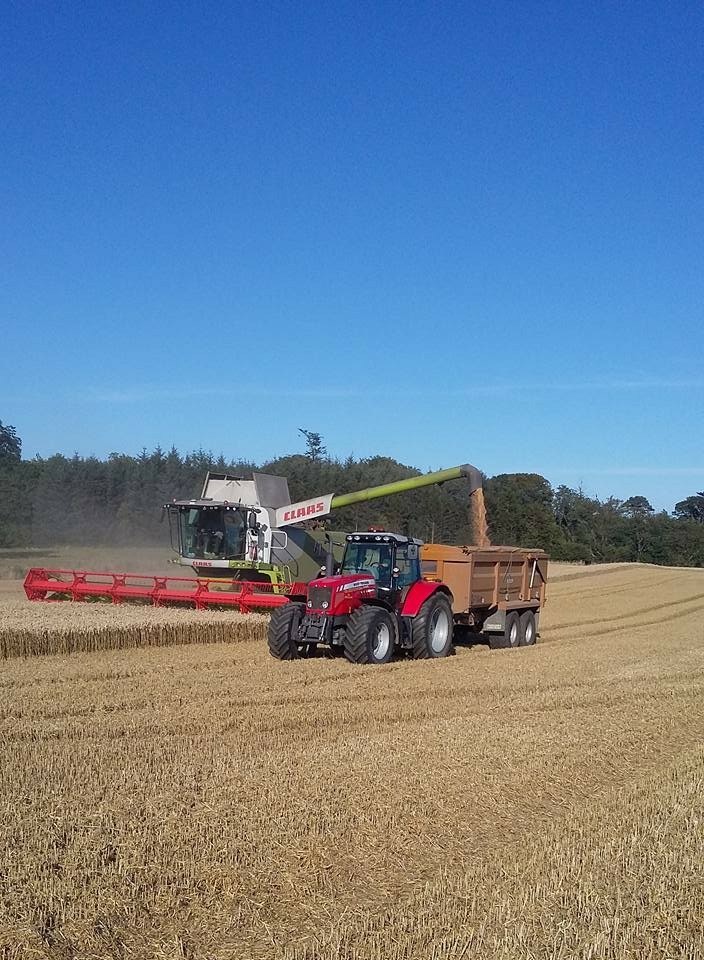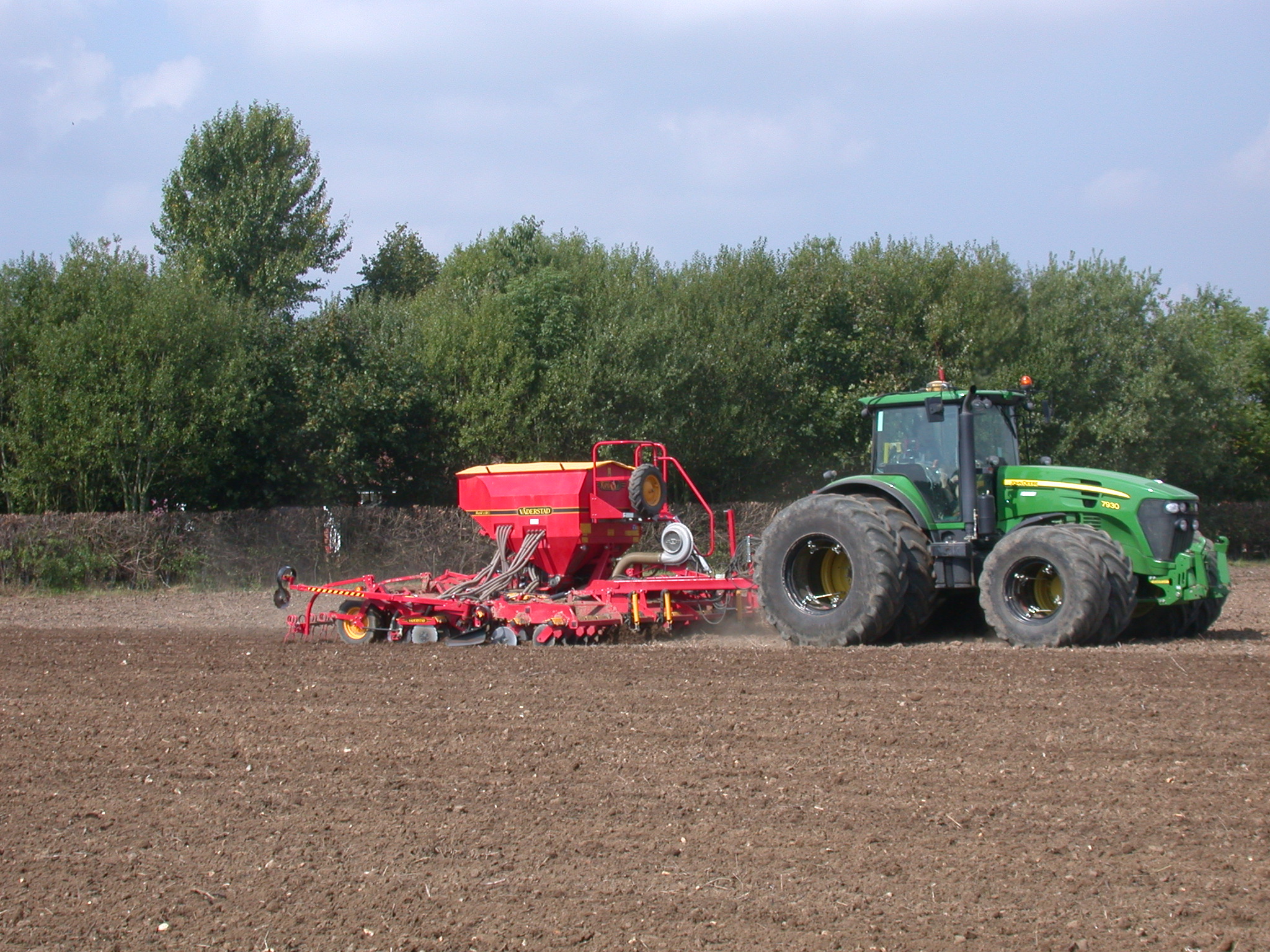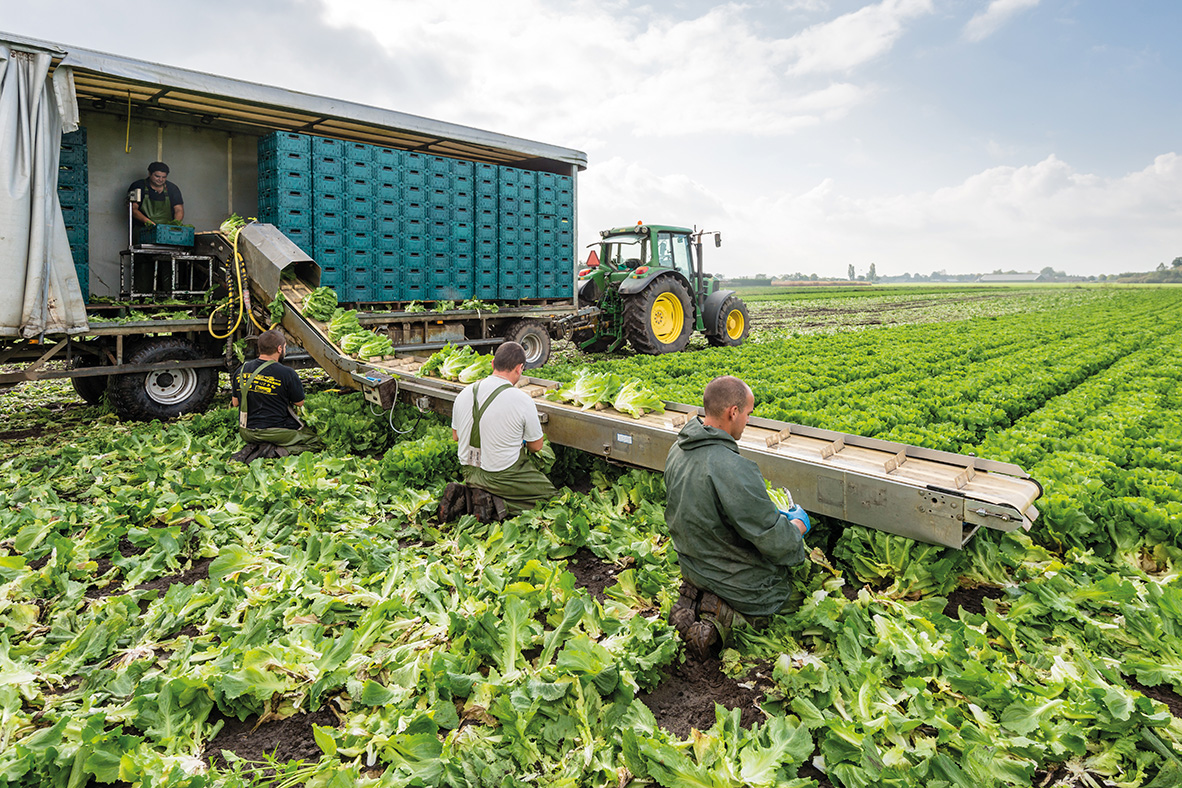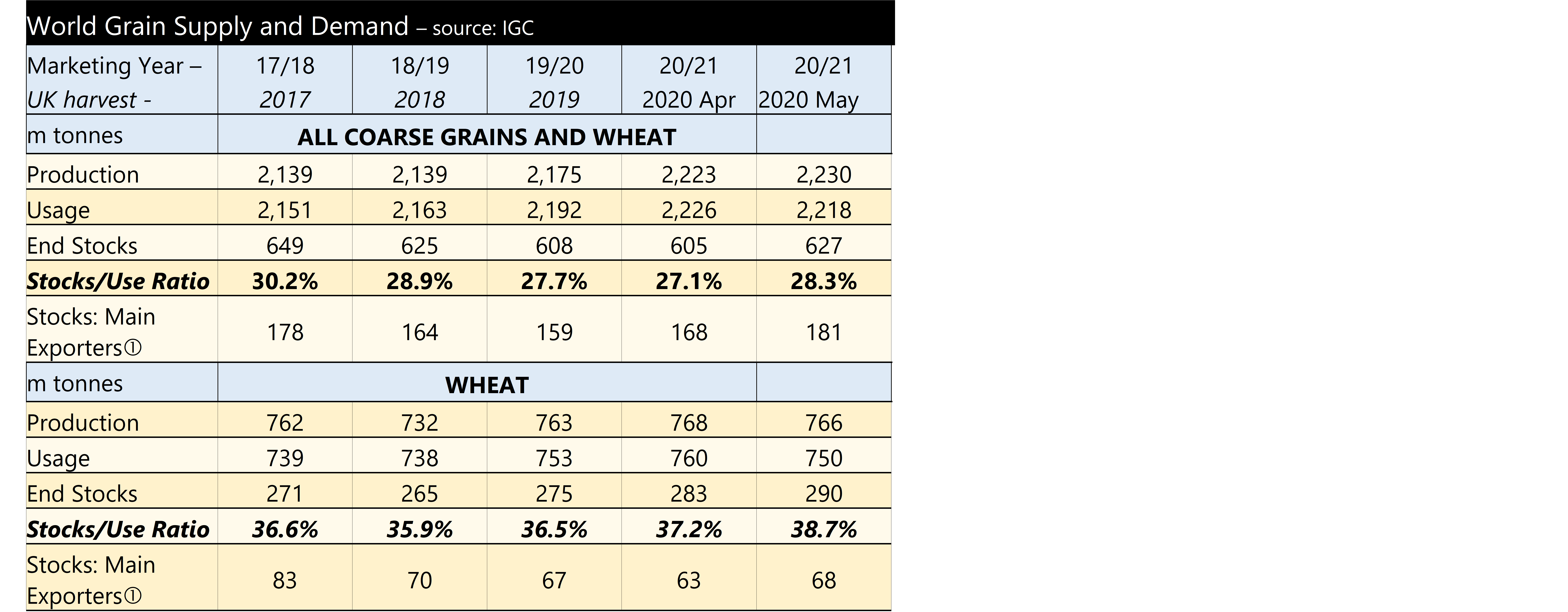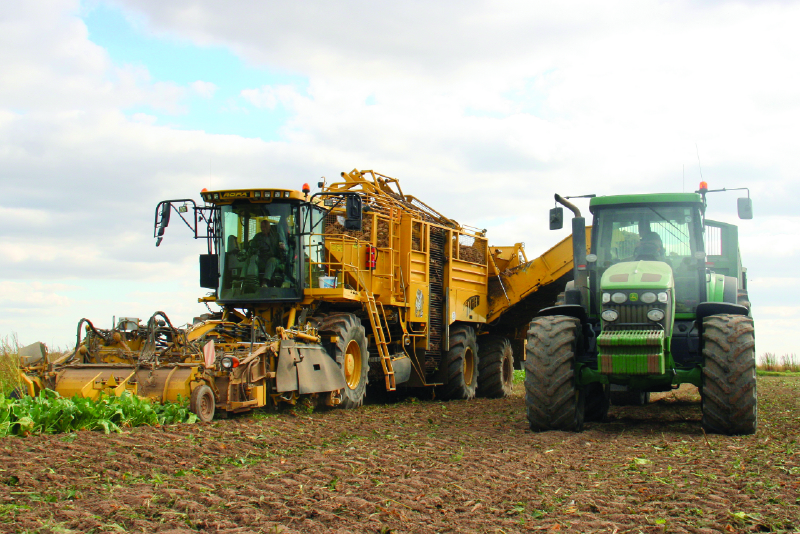In the June 2019 edition of this Bulletin, we wrote “It never rains, it always pours! By early June, some were concerned about the dry soil conditions, by the end, the concern was flooding.” Some parts of Central England have felt the same about this year, with flash storms, bringing a month’s rain in a morning, onto previously dry land. Damage to crops is thought minimal, if only because they are so thin! The current sunshine will help them ripen with good quality and support bushel weights.
Since September last year, the November 2020 feed wheat futures price has lifted from £140 per tonne to over £175, and is currently at about £163 per tonne. Since September, production concerns have reduced the expected crop size to what most people now expect to be considerably less than 10 million tonnes, and probably nearer to 9 million.
November 2021 wheat price has hardly moved out of the £150 to £155 per tonne range since September. Clearly, there is so little information about how much there will be in 2021 yet, and what the change in demand might be, that the market does not move far unless currencies shift it.
Looking ahead at the possible, or likely supply and demand figures for wheat this year, we find a most unusual situation. We are likely to enter the 2020/21 crop marketing year with considerable carry-over stock level according to the AHDB; higher than we have had for 30 years. This is convenient, as the harvest projection outlined above is 5 million tonnes, or a third, down on the average crop size. It means the UK will still need to import approaching 4 million tonnes of wheat with zero exports to balance the books and finish with sufficient ‘pipeline’ stocks – the stocks that are required to keep the mills running between the end of the marketing year (June) and the harvest. This is an import level also not seen in a generation. Not only has the UK not had a crop this small in that period, but also, since the last small crop (of 11.5 million tonnes in 2001), the UK has increased its level of wheat processing and consumption by 2 million tonnes.
| UK Wheat Balance Sheet – source AHDB & ABC |

The barley supply and demand outlook is less extreme. Whilst the data is not as easy to interpret (two crops, less certainty about spring drilled area for example), using the lowest yields for both crops for a decade, and the crop area figures used by The Andersons Centre, we end up with a crop of 6.3 to 6.4 million tonnes. This is considerably less than last year (8 million) but similar to 2018. The rains last week will have provided a necessary boost to the growing crops in the UK, especially the springs, and now most grains will have sufficient moisture to see them to harvest.
The area of oilseed rape harvested is likely to be less than 400,000 hectares (including springs), making it the smallest area since 2002. With some shocking looking crops in the ground, it is possible the total crop tonnage will be less than it was then. Demand is lower though, as the economics of biodiesel is not worth turning the factories on, and with people not eating out (where food is generally fattier), the demand for oils for cooking has also fallen. The market for pulses at this time of year is very quiet. The recent rains will have been very well received by the growing crops, especially the spring drilled ones.


